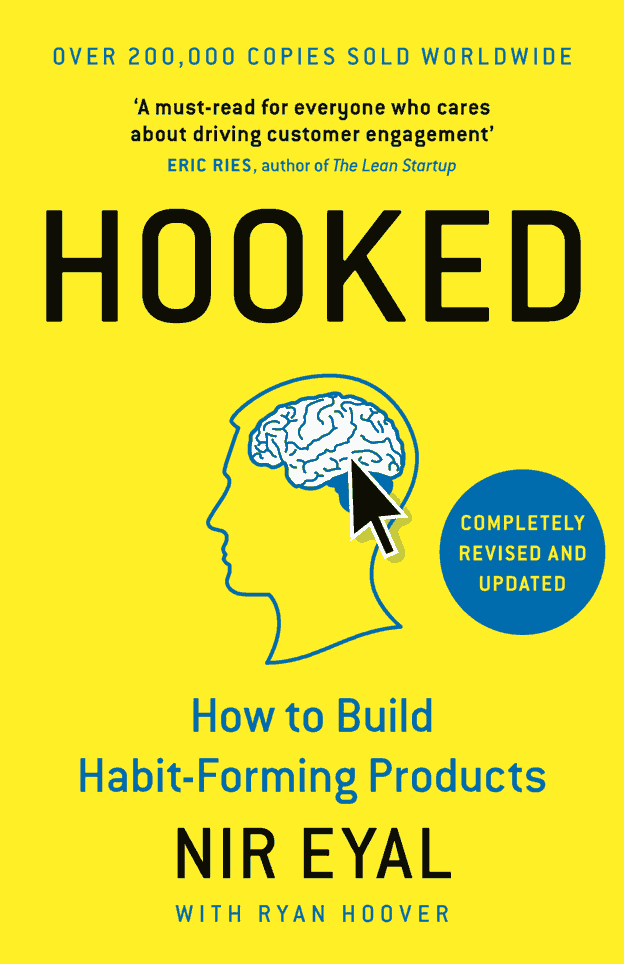
Titre : Hooked, how to Build Habit-Forming Products
Auteur : Nir Eyal
Éditeur : Penguin
Pages : 242
Année : 2014
ISBN : 978-02-41-184837
« Selon une étude universitaire, les gens consultent leur téléphone 34 fois par jour. Mais d’après les spécialistes du secteur, on approcherait plutôt le chiffre sidérant de 150 consultations quotidienne.
RECONNAISSONS-LE : NOUS SOMMES ACCROS ! »
C’est en ces termes que Nir Eyal touche du doigt la plus grande réussite marketing de ces dernières décennies. Au fil des pages il décrypte le mécanisme de l’addiction à un produit ou à un service.
Les neurosciences ont largement permis de comprendre le fonctionnement de notre cerveau et de jouer sur notre besoin de satisfaction. Cela se déroule en quatre étapes :
1. Déclencheurs
2. Récompense
3. Action
4. Investissement
Vous êtes marketeur, créateur, entrepreneur ? Il vous dévoile le processus infaillible qui permettra de rendre votre client accro.
Vous être client, utilisateur ? Vous comprendrez pourquoi vous ne pouvez plus vous passer de telle application, de tel service ou de tel produit.
Nir Eyal est un auteur, entrepreneur, conférencier et investisseur américain, dont le livre Hooked l’a popularisé au delà des États-Unis. Il s’intéresse à la psychologie, la technologie et le business et ce qui touche au design comportemental.
Introduction
acknowledgments
contributors
appendix
notes
Ma première lecture de l’ouvrage date d’il y a une 10e d’années, lorsque le livre est sorti. A l’époque, les mécanismes de l’addiction étaient moins connus du grand public (et des designers et concepteurs d’applications) qu’aujourd’hui. Nir Eyal a eu le mérite d’exposer de manière précise les mécanismes en jeu, en s’adressant à des marketeurs, responsables produits, entrepreneurs, etc. Le livre fourmille de très nombreux exemples (certains sont clairement datés aujourd’hui…). Mais j’avais vraiment adoré cet ouvrage, véritable porte d’entrée pour comprendre le design comportemental.
Je me suis donc replongé dans cet ouvrage pour vous partager mon avis, 10 ans après.
J’ai également écouté Nir Eyal à plusieurs reprises lors d’interviews mais suis toujours resté surpris de son positionnement pro-business, sans ne jamais avoir émis franchement de réserve ou regret sur l’usage de ces techniques de manipulations dans notre quotidien.
A la (re)lecture du livre, certains passages pourraient presque paraître cyniques aujourd’hui « Companies that form strong user habits enjoy several benefits to their bottom line »… plus besoin de marketing, avantage compétitif, building the mind monopoly… Il y a bien quelques warning « product builders would benefit from a bit of introspection before attempting to hook users » ou encore un certaine moralité des designers de produits (ndlr: qui sera inversement proportionnel à la pression du management pour augmenter les indicateurs de performance).
Malgré cela, cet ouvrage reste un « classique » qui a contribué à populariser les mécanismes d’addictions que nous retrouvons quasi systématiquement dans nos applications de smartphone. Mieux comprendre ces mécanismes peut aider à s’en prémunir (en partie).
Se faire plaisir et soutenir la librairie indépendante de votre quartier et ce blog, c’est possible ! Achetez ce livre au même prix chez leslibraires.fr!